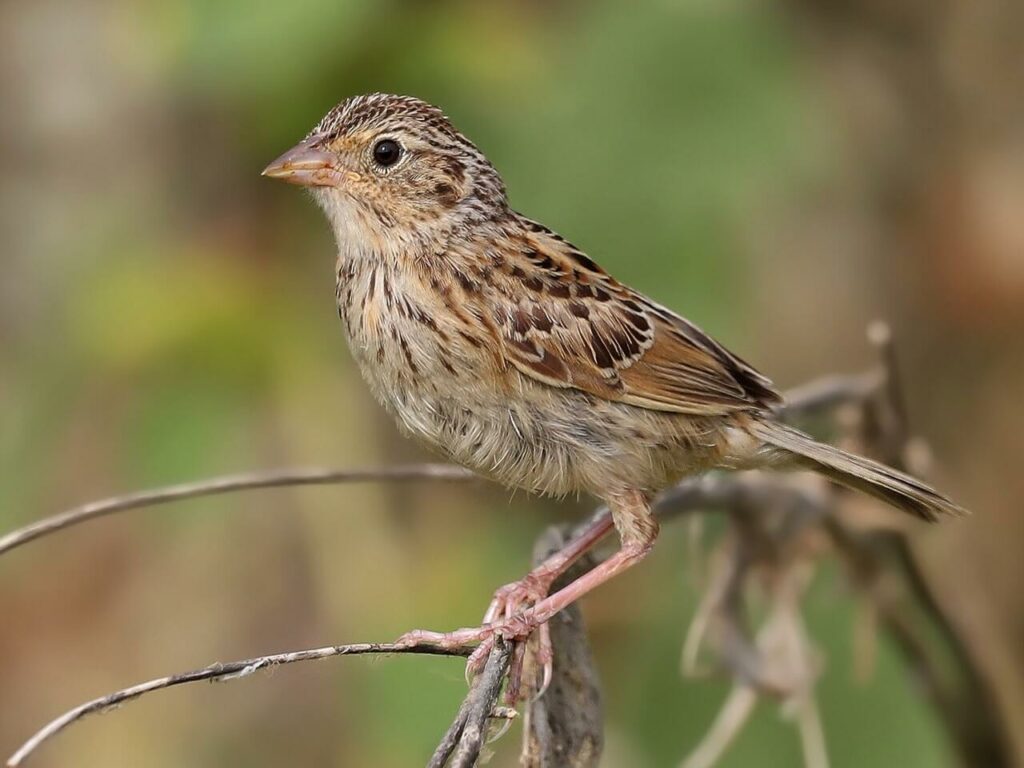
8 Bird Species Found in California Grasslands
A juvenile grasshopper sparrow perches on a twig. Photo by Matt Davis / Macaulay Library.
By Alix Soliman, Communications & Outreach Coordinator
The grass is reaching up to our hips, catching the morning dew, and dripping it down our pant legs into soggy boots. It’s 6:30 a.m. on a cloudy morning in late May. Wildlife Biologist Mike Stake has set a timer for 5 minutes, and we’re pivoting in place with our binoculars, silently surveying our surroundings and hoping to glimpse the birds that inhabit the grasslands of the Santa Lucia Preserve.
Mike records the few sightings we get – two spotted towhees, a California towhee, and several cliff swallows – but mostly, he’s capturing songs and calls on his data sheet. Accustomed to hiding from predators, many of these birds perch low in swaying stalks of grass, invisible to us as we lumber through.
The conservancy began conducting grassland bird surveys in 2011, when we established 23 survey points across The Preserve’s 5,000+ acres of grasslands with a goal to monitor habitat health and understand nesting behavior. The latest U.S. State of the Birds Report found that grassland birds “have suffered the biggest bird declines of any terrestrial biome” due to habitat conversion into agriculture, tree and shrub encroachment, and pesticides.
Mike and I start in the Mesa, where we hear the tick-a-tick tzzzzzzz of several grasshopper sparrows. The insect-like trill of the grasshopper sparrow is becoming an increasingly rare treat, as habitat loss has caused their population to decline 2.5% per year, amounting to a total of 72% between 1966 and 2015. “They require great habitat,” Mike says as we dodge gopher holes on our trek back to the car. “If the grassland is not there, they won’t be there. We have to wonder what they like about this specific location. There’s not much invasive thistle or mustard here this year – that’s good.”
Since the U.S. environmental movement first found its footing after Rachel Carson published Silent Spring, birds have proven a reliable indicator of ecosystem health. In California’s once expansive meadows, species sensitive to change or picky about conditions can show us where we might focus restoration efforts for the benefit of both wildlife and people.
One of the best things landowners can do to protect grassland birds is to leave their grass tall until breeding season ends. To find out which species may be nesting in your grasslands, download the Merlin Bird ID app on your smartphone and select “Sound ID” to identify them by song and call.
Over the 12 years we’ve been studying grassland birds, biologists have recorded a whopping 92 species during this annual survey on The Preserve. Of those, here’s a selection of 8 bird species you can learn to identify in your grasslands:
1. Song Sparrow (Melospiza melodia)
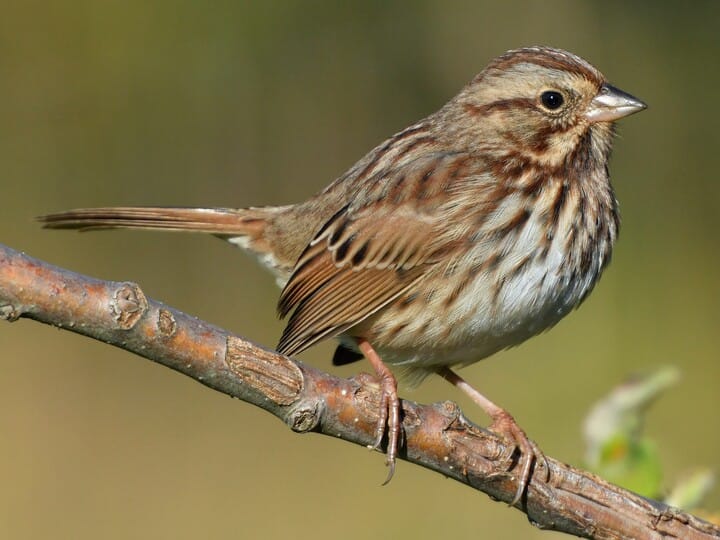
Photo by Jonathan Irons / Macaulay Library
The song sparrow is one of the most widespread sparrows in North America, and the bird we detect most often during our grassland bird surveys. They thrive in a huge variety of habitats and forage on the ground for insects, seeds, and fruits, with preferred food sources depending on what’s available in their area. They sing loudly, with 3-6 variable notes followed by a rapid, high-pitched trill. Nests are hidden in grasses or weeds, often near water, and are constructed of loose grasses and bark with grasses, roots, and animal hair lining the inside of the cup. These small, blunt-winged birds are prodigious breeders, laying up to 7 broods per year with 1-6 eggs in each.
2. Dark-eyed Junco (Junco hyemalis)
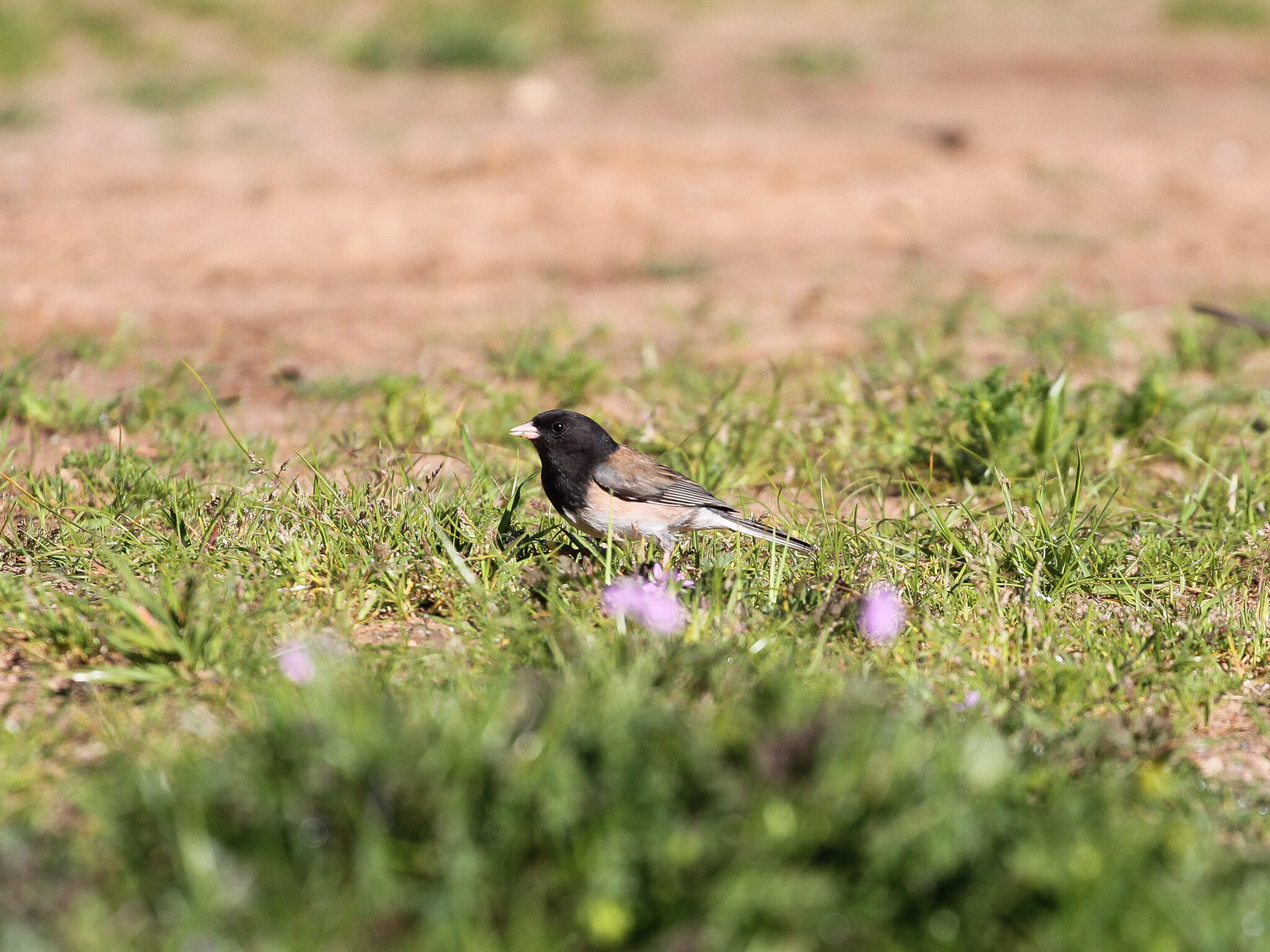
Photo by Alix Soliman
These small, round birds are also common throughout North America and found in an enormous range of habitats. The seeds of chickweed, buckwheat, sorrel, and other plants make up about 75% of their diet, and during breeding season they supplement this with insects. With an even, single-tone trill, they can be confused with the similar song of the chipping sparrow or the pine warbler. Females typically build their nests on the ground and lay between 3-6 eggs in 1-3 broods per year. The construction of the nest depends largely on what’s available – they can be a simple lining of grasses or pine needles, or more complex with twigs and leaves making the cup and ferns, roots, hair, and moss lining the inside. Dark-eyed juncos are often seen hopping on the ground as they peck or scratch at the leaf litter in search of seeds. In the winter, they form flocks.
3. Grasshopper Sparrow (Ammodramus savannarum)
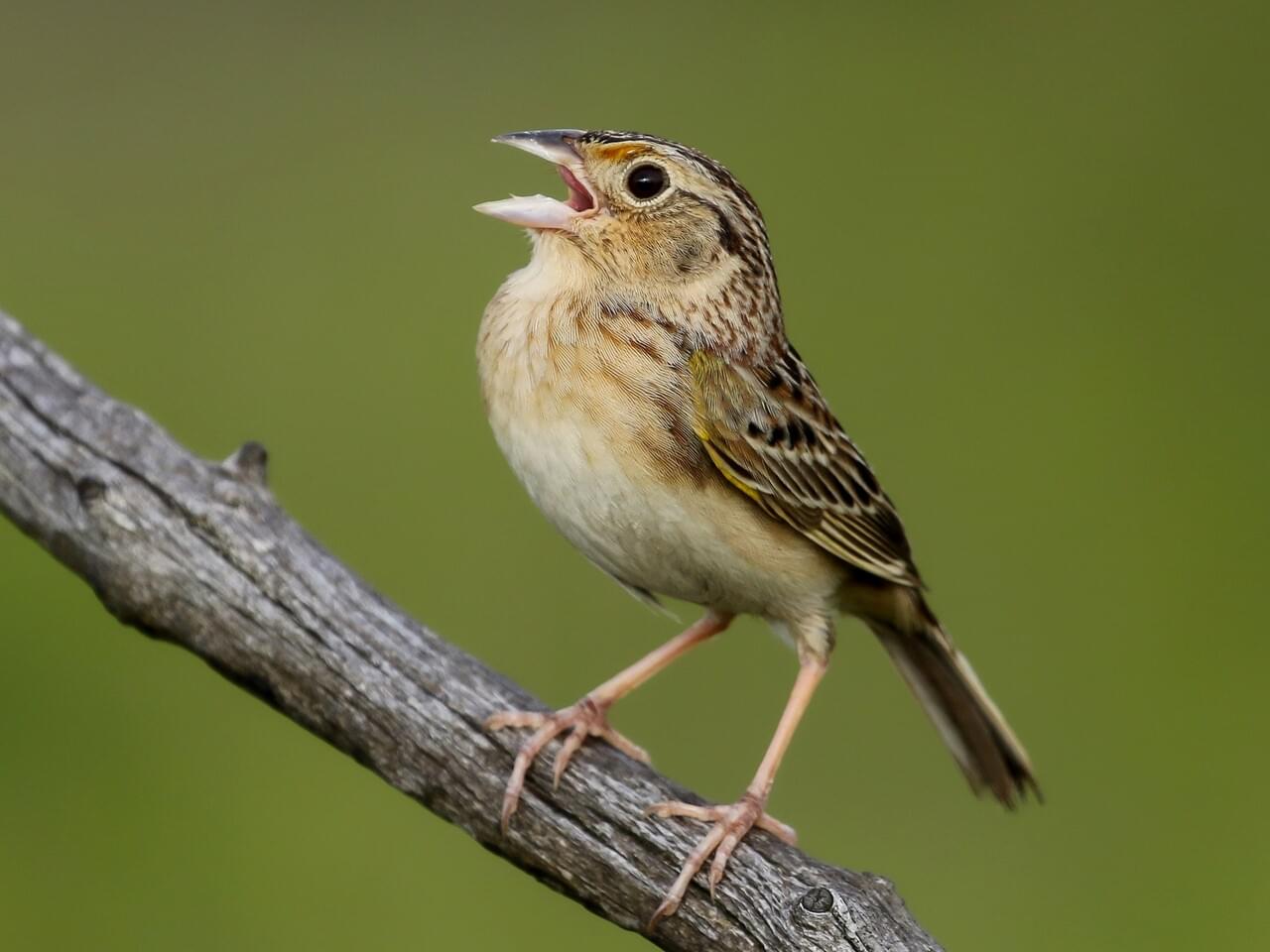
Photo by Kojo Baidoo / Macaulay Library
The grasshopper sparrow is a migratory species that breeds primarily east of the Rocky Mountains, with smaller breeding populations in coastal California and patches of Washington, Idaho, and Wyoming. In the the winter, they travel down to the southern United States, Mexico, and the Caribbean. They specialize in grasslands, prairies, and pastures with little to no shrubbery and eat insects in the summer (especially grasshoppers) and fallen seeds in the winter. Nests are typically dome-shaped, made of grasses and sedges woven into a dense grass patch with a side entrance, and lined with fine grass and animal hair. Clutches range from 3-7 eggs in 2-4 broods per year. Grasshopper sparrows are typically found running on the ground rather than flying, and are heard more often than seen. Acknowledging the quickly diminishing population of this species, the grasshopper sparrow is referred to by the Cornell Lab of Ornithology as a “common bird in steep decline.”
4. Western Meadowlark (Sturnella neglecta)
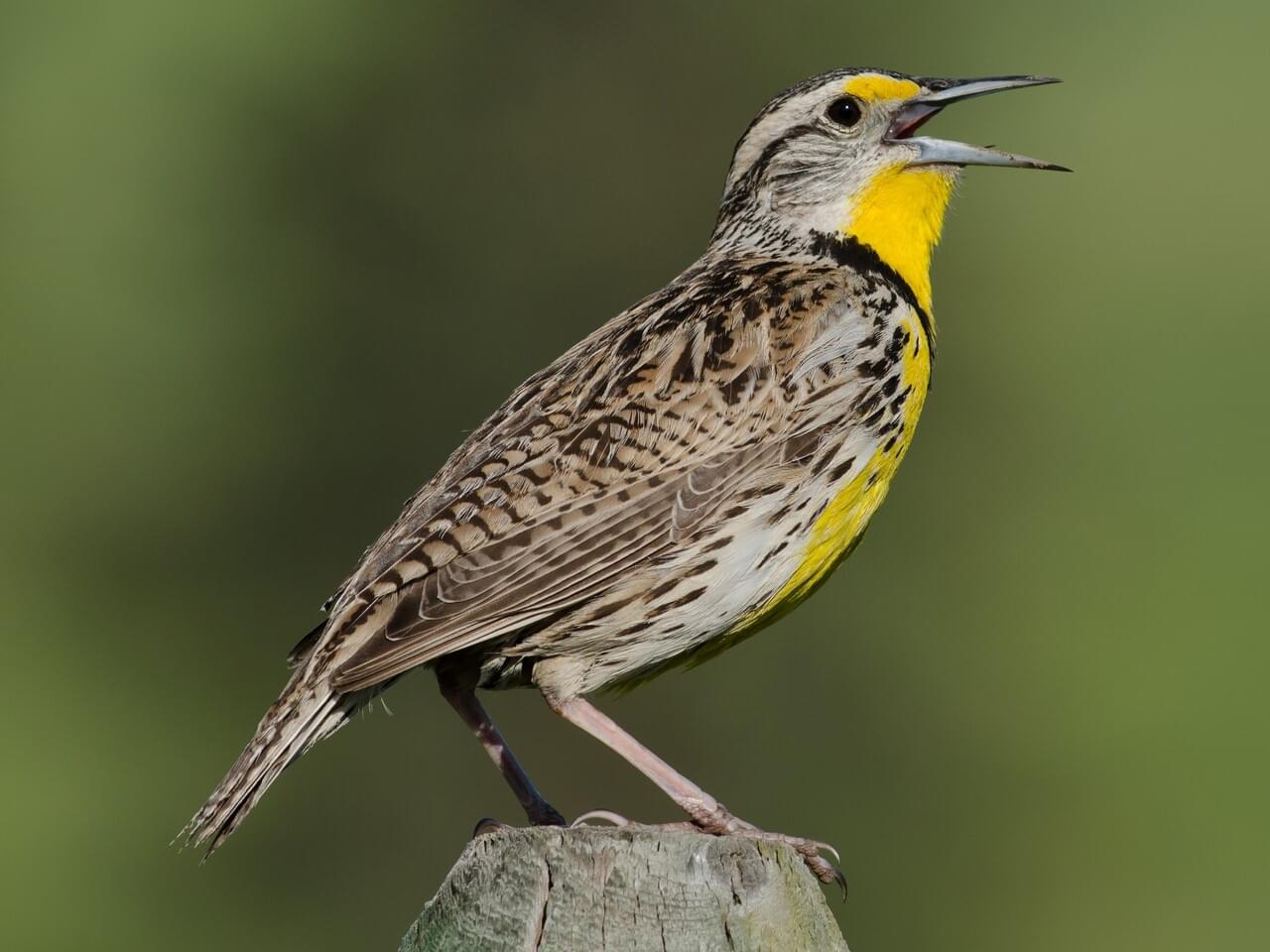
Photo by Alix d’Entremont / Macaulay Library
Western meadowlarks are residents of California and have a broad range in western North America. This species favors pure grasslands and prairies, avoiding wooded edges and areas with dense shrubs. Meadowlarks consume grain, seeds, insects, and occasionally the eggs of other grassland birds or roadkill. The song of the western meadowlark is a bright mix of whistles and gurgling warbles, coming in 10-12 different arrangements. Instead of building a cup nest, the female forms a depression in the soil with her bill and lines it with soft grasses and stems, sometimes bending vegetation in a dome to cover it. They lay 5-6 eggs in 1-2 broods per year. Like quails, they are large, stout, keep to the ground to forage, and fly in rapid bursts and short glides.
5. Lark Sparrow (Chondestes grammacus)
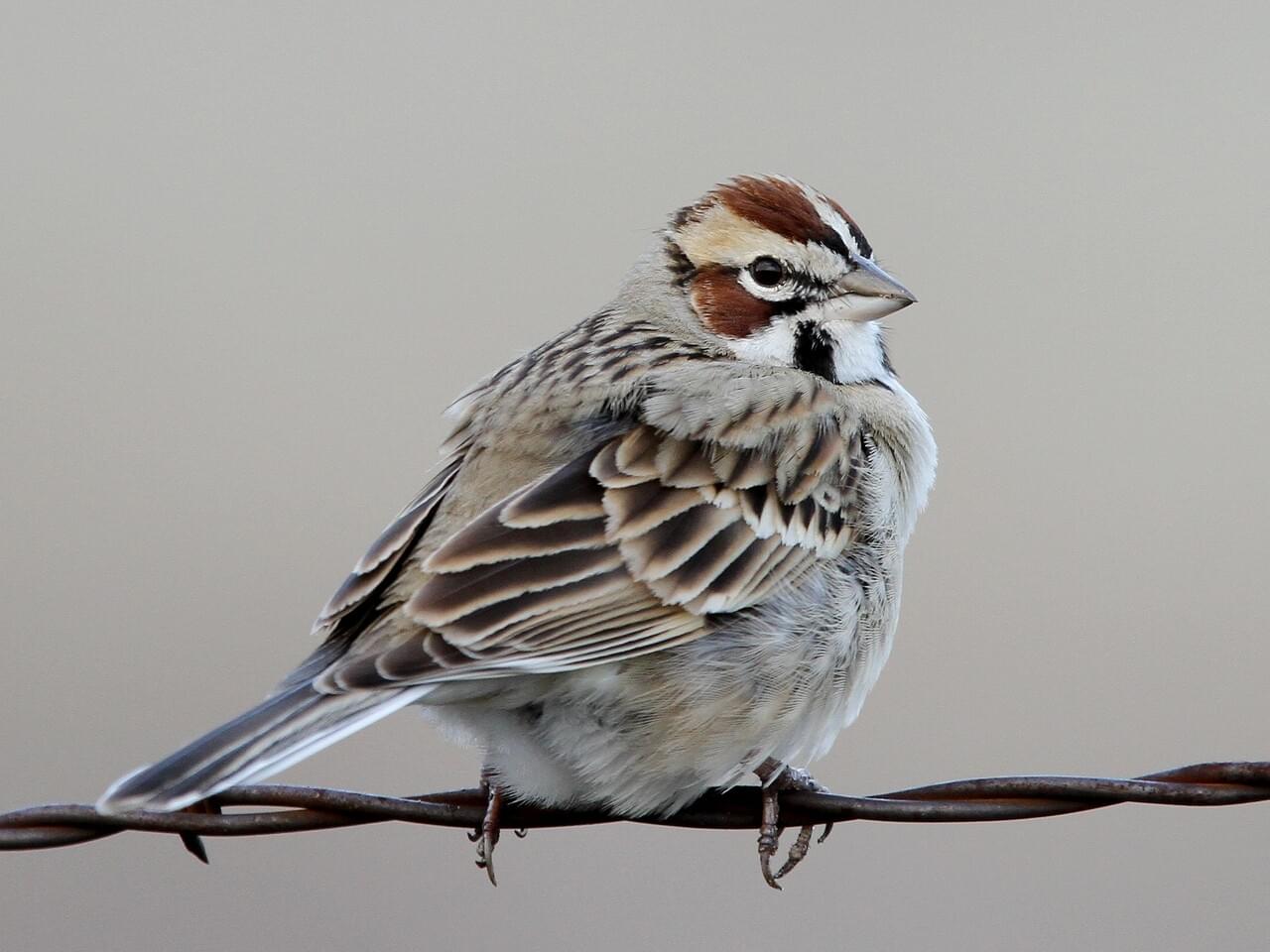
Photo by Christoph Moning / Macaulay Library
This large sparrow has a striking head pattern and is found in coastal California and the U.S. – Mexico borderlands year-round, with migratory populations occurring throughout much of the central and western U.S. and parts of Canada. They tend to breed in grasslands, savannas, open woodlands, sagebrush steppe, and fallow fields. Lark sparrows eat insects and seeds, favoring insects during the breeding season. Their song is a jumbled melody of buzzes, trills, and clear notes. Females nest on the ground in a shallow depression, sometimes adopt old nests from other species, or build their own nest low in a shrub or tree. Nests have a thick wall made of grass, twigs, or stems and are lined with fine grass or horse hair. Lark sparrows have 1-2 broods per year with 3-6 eggs in each brood. This species is still common, but their population has declined 32% between 1970 and 2014.
6. Red-winged Blackbird (Agelaius phoeniceus)
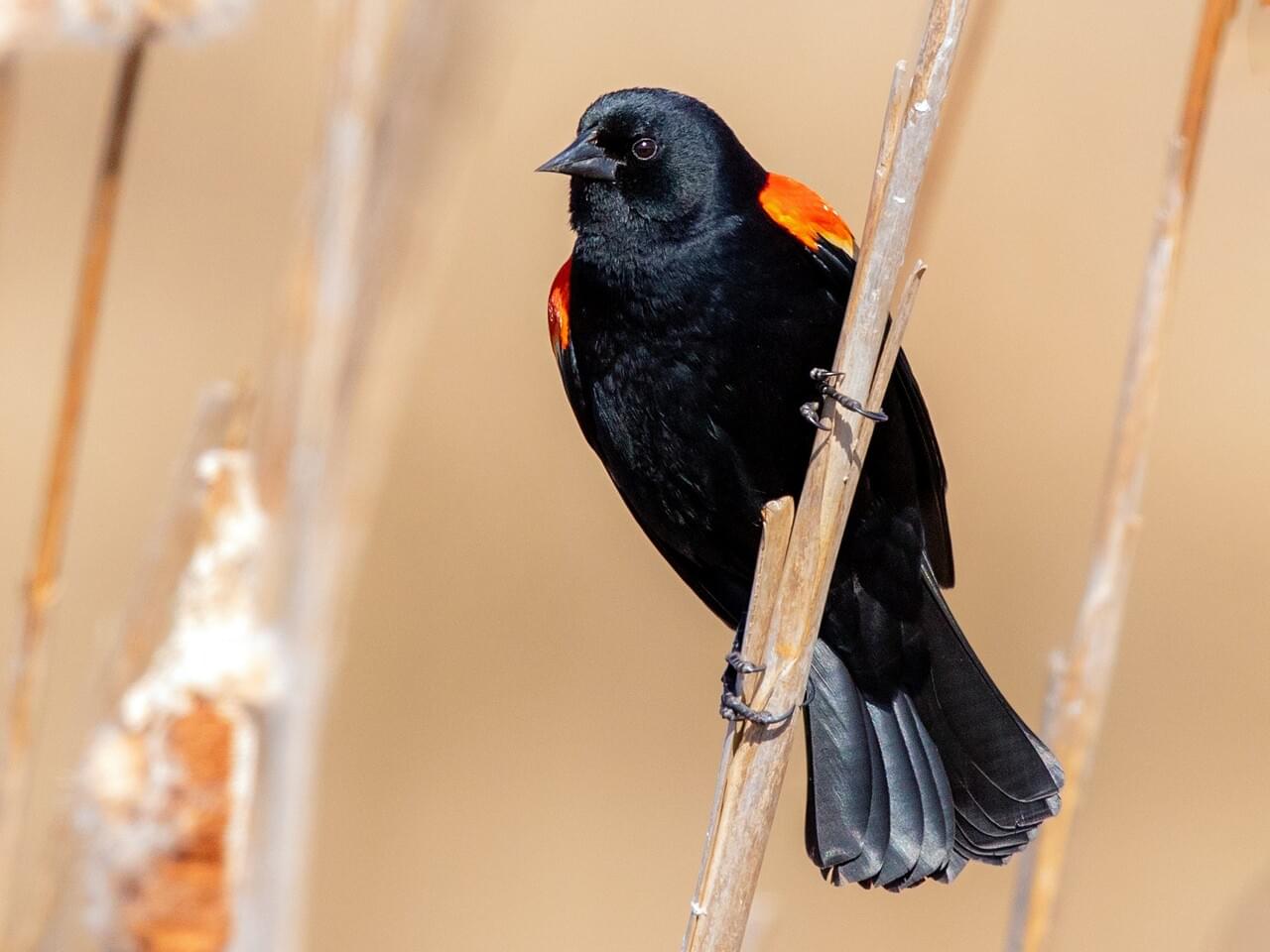
Photo by Brad Imhoff / Macaulay Library
The red-winged blackbird is common throughout North America and makes its home in wetlands, marshes, and ponds with ample vegetation during the breeding season and agricultural fields, rangeland, and grasslands the rest of the year. They mainly eat insects in the summer and seeds such as corn and wheat in the winter. Their conk-la-reeee song is instantly recognizable, especially when these birds flock together and create a cacophony in the summer. Red-winged blackbirds build their nests low among the tall cattails, tule, and willows growing in marshes or ponds. Nests are constructed of woven wet stems and grasses, strengthened by wet leaves, mud, and decaying wood, and lined with fine, dry grasses. This species lays 2-4 eggs in 1-2 broods per year. The red-winged blackbird can be easily mistaken for the tricolored blackbird (Agelaius tricolor), an endangered species under the California Endangered Species Act that has a breeding population on the Santa Lucia Preserve.
7. California Towhee (Melozone crissalis)
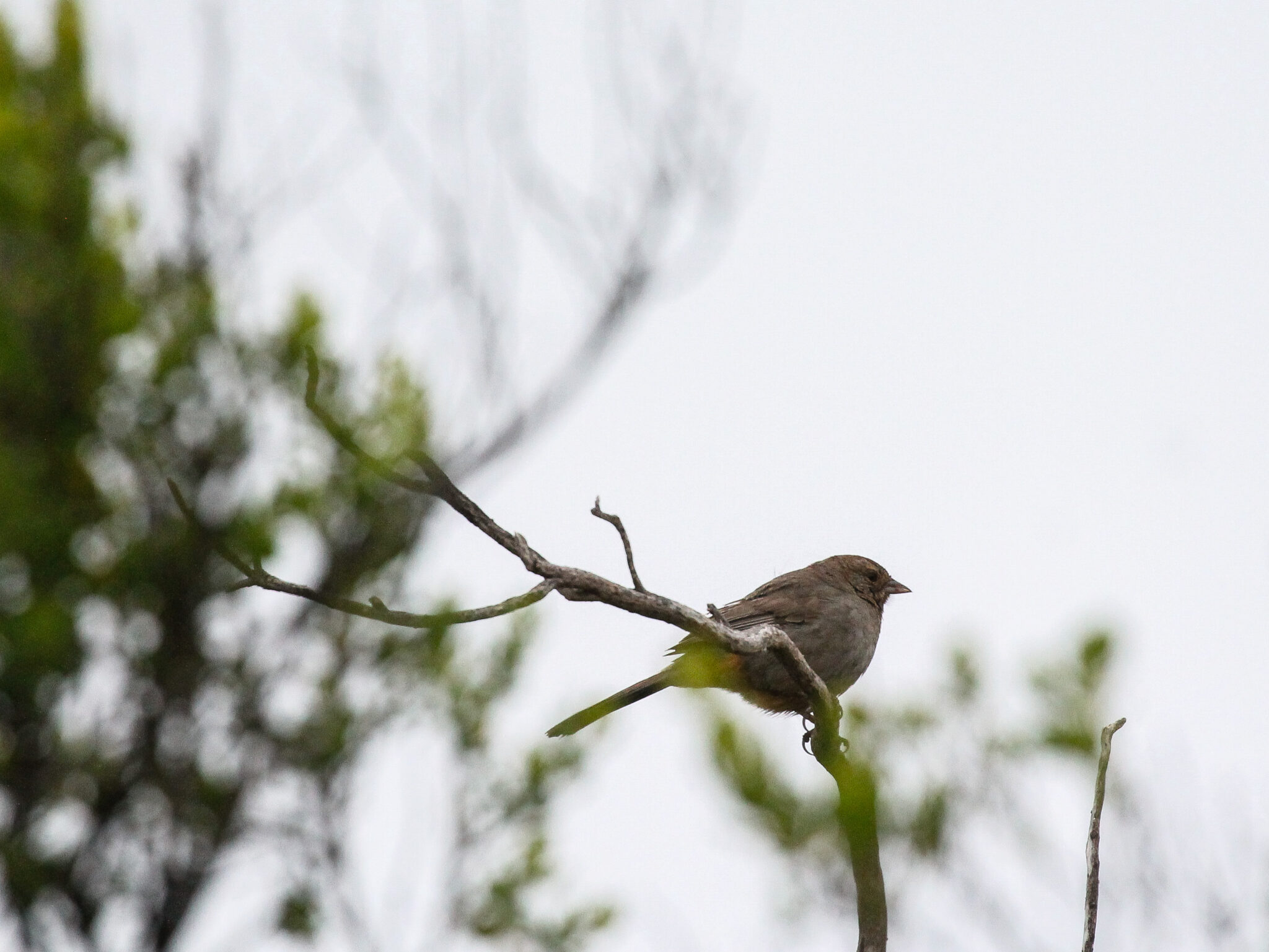
Photo by Alix Soliman
California towhees are found only in coastal California, Baja California, and a small patch of southwestern Oregon. They live in chaparral and oak habitats, but are also found in grasslands foraging for their diet of grass and herb seeds, supplemented by insects in the breeding season. They also eat fruits from elderberry, coffeeberry, poison oak, and garden produce. Their high pitched, repetitive chip song starts slow and then accelerates. Females build their nests in a low fork in a shrub or tree and make the outer cup with twigs, grasses, and flowers. The inner lining is made from animal hair, sagebrush bark, and fluffy seeds. California towhees lay 2-5 eggs in 1-3 broods per year. They are often seen foraging on the ground using a double-scratch method to expose and pounce on insects.
8. Spotted Towhee (Pipilo maculatus)
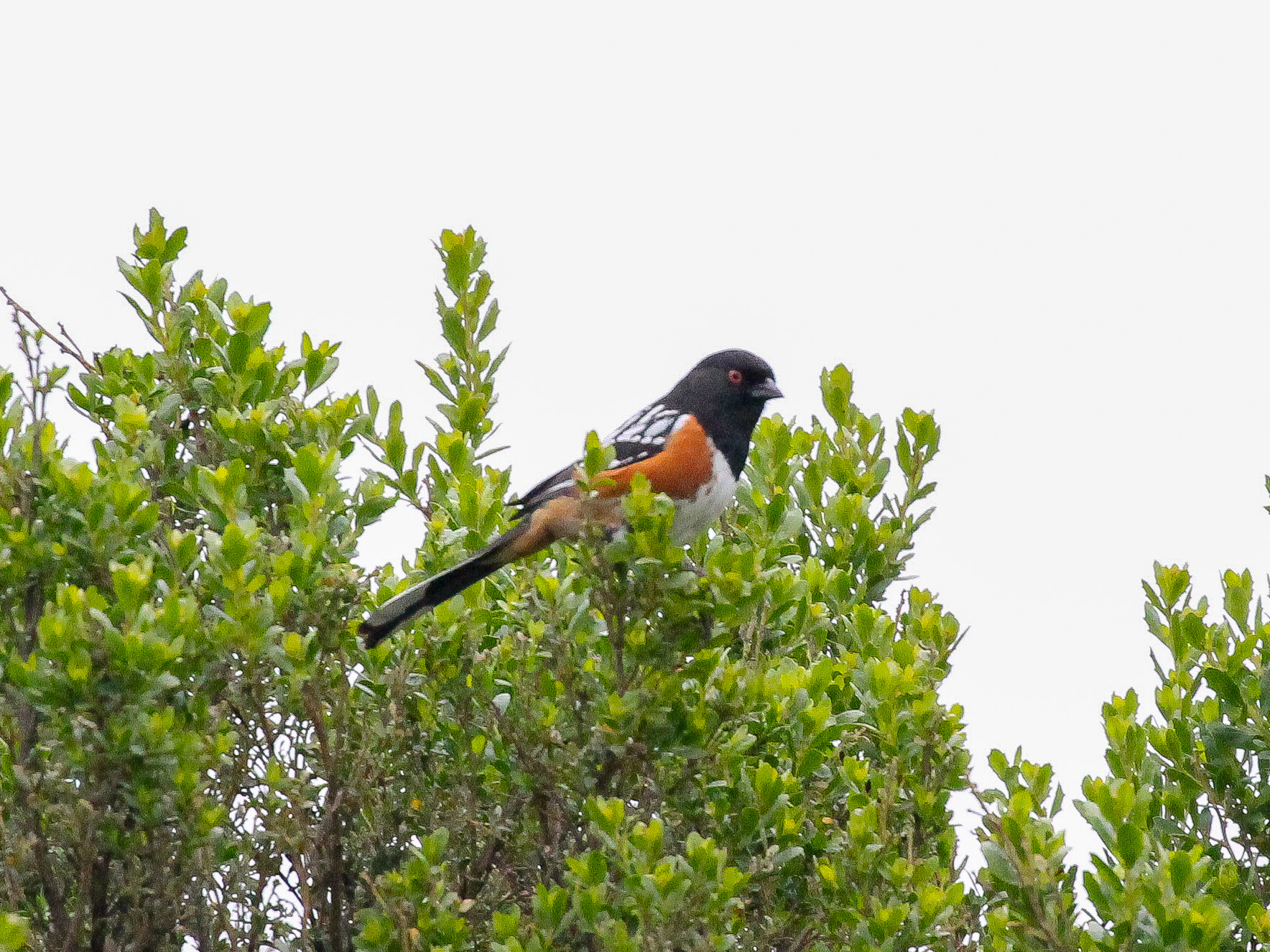
Photo by Alix Soliman
Spotted towhees have a wider range than California towhees, covering much of the western U.S. and parts of Canada and Mexico. They live in shrubby thickets, forest edges, chaparral, and places with lots of leaf litter to forage for insects in. They also eat berries, acorns, and seeds from buckwheat, thistle, poison oak, chickweed, oats, wheat, and corn. Their song is a series of low-pitched and short dot dot dot notes followed by an insect-like trill. They often make a low woah call as well. Females typically build ground nests within a clump of grass or at the base of a shrub. The outer cup is constructed of dry leaves, bark strips, and stems and then lined with fine grasses, roots, pine needles, and hair. Spotted towhees lay 2-6 eggs in 1-3 broods per year. This species is commonly seen hopping and scratching at leaf litter on the ground.